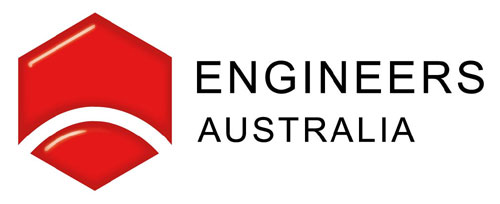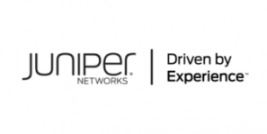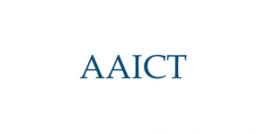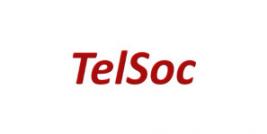LINKS
KEY DATES
- Paper deadline - 31 July 2016
- Acceptance notification - Extended to 12 September 2016
- Final paper deadline - Extended to 10 October 2016
- Early bird deadline - 1Extended to 15 October 2016 (firm)
- Registration deadline - >1 November 2016
- Conference - 7-9 December 2016
SPONSOR


PATRONS




SUPPORTERS
![]()

Information for authors
Submission Guidelines
Submitted manuscripts should be written in English conforming to the standard IEEE templates available from Here. We invite the following two types of submissions:
Full Papers (6 pages complementary, and up to 8 pages with over length charge) and
Short Papers (3 pages complementary and up to 4 pages with over length charge).
All paper submissions must represent original and unpublished work. Papers must be submitted electronically in PDF format through EDAS from Here.
Guidelines for Camera Ready Papers
Preparing the final version of your paper, it is important that you address all relevant critical comments of reviewers.
The IEEE templates are the same as for initial submissions.
All camera-ready papers should be in PDF 1.7 format or higher and fonts must be embedded. The final version must be submitted via EDAS. Please log in into EDAS, and click "copyright" in the row with your paper. Complete the copyright form and begin uploading the final version of your paper.
For final manuscripts:
- if you are using Microsoft Word, then use its most current version, as it will help reduce word-to-pdf conversion issues such as embedded fonts, bookmarks, etc.,
- no page numbers and no headers/footers,
- a non-zero PDF top and bottom margins (typically, at least 0.5 inches) to help indicate if there are any page numbers, and
- the final version MUST pass the format check in EDAS.
If you are informed about errors in your PDF file, hints for fixing a given problem can be found here.
Full papers are allocated up to six A4 pages in the IEEE conference proceedings. Short papers are allocated up to three pages. You can submit up to two more A4 pages for full papers or one more page for short papers, but this carries an extra charge of USD100 per page. Full papers exceeding eight pages or short papers exceeding four pages will NOT be accepted by EDAS.
The deadline for the camera-ready submission is 1st October 2016.
As stated on the Registration page, authors of papers accepted for ITNAC 2016 should also remember that:
- Publication of each paper (regardless whether the paper is authored by a student or non-student) has to be secured by at least one full standard conference registration fee paid by its authors.
- The IEEE reserves the right to exclude paper from distribution after the conference (e.g., removal from IEEE Xplore) if the paper is not presented at the conference. Please see the No-Show Policy for details.
The conference publication chair is Dr Qiang Fu (<Qiang.Fu@ecs.vuw.ac.nz>), and please contact us if you need help.
Preparing your Presentation for ITNAC 2016
Please ensure you nominate the presenter in EDAS and upload your presentation to EDAS prior to the conference.
Sessions have been planned to allow 25 minutes per presentation. 18 - 20 minutes are allocated for the delivery and 5 - 7 minutes for Q & A discussions and changeovers. Please plan your presentation to fit these parameters. PowerPoint or pdf delivery will be acceptable, for normal delivery of a talk we would expect your talk to consist of at most about 15 - 18 slides:
The following is an extract from a series of 4 booklets prepared by the IEEE to guide it's members in preparation of technical presentations, it contains some useful hints:
"An introduction, opening, body and conclusion comprise the four major parts of a successful presentation. The introduction sets up your presentation by identifying the tone of your message, highlighting the importance of the subject matter and establishing your credibility. The opening provides a preview of the presentation by drawing the audience’s attention to your presentation, conveying your core message and defining an outline of the upcoming points. The body is the heart of your presentation.
The body defines your main points with appropriate, detail and supporting material. The body may incorporate rhetorical devices while maintaining a focus on simple, clear language to maximize comprehension.
Finally, the conclusion summarizes your core message, recaps your main points and challenges the audience to take action.
With these four components, you can create effective presentations to persuade, inform or share information."
REFERENCE: "Technical Presentations. Book 2 Structure - Anatomy of a Successful Presentation", IEEE USA E-Books.
Grants-in-aid for Student Authors
We are pleased to announce that ITNAC 2016 will offer up to 10 student grants-in-aid, for student authors to assist them in their costs of attendance in the conference.
Eligibility Criteria:
- The applicant must be a student author of an accepted paper.,
- The applicant must attend the conference to present the accepted paper.
Application material:
- An application letter, that includes:
- The ID, author list, and title of the accepted paper for which the student is an author,
- A brief summary of the student research interests and accomplishments to date,
- A statement about why the conference attendance is important to the student,
- An estimate of the following costs of attending ITNAC 2016: airfare, hotel, and conference registration. It is anticipated that travel grants will partially cover these attendance costs.
- The student’s CV including country of origin and country of residence.
- A support letter from the advisor of the applicant. The letter should provide the following:
- A confirmation that the student is a Ph.D. candidate or a M.Sc./B.Sc. student in good academic standing at the given institution.
- A confirmation that the student will attend the conference to present the accepted paper.
- A statement of financial commitment to pay the remainder of the student applicants’ cost that is not covered by the grant for attending the conference.
Important Dates:
Submission Deadline: October 5, 2016
Award Notification: October 15, 2016.
How to apply:
Applicants should create their application as a single PDF file including all the required documents, and send to the application to travelgrant@itnac.org.au.


